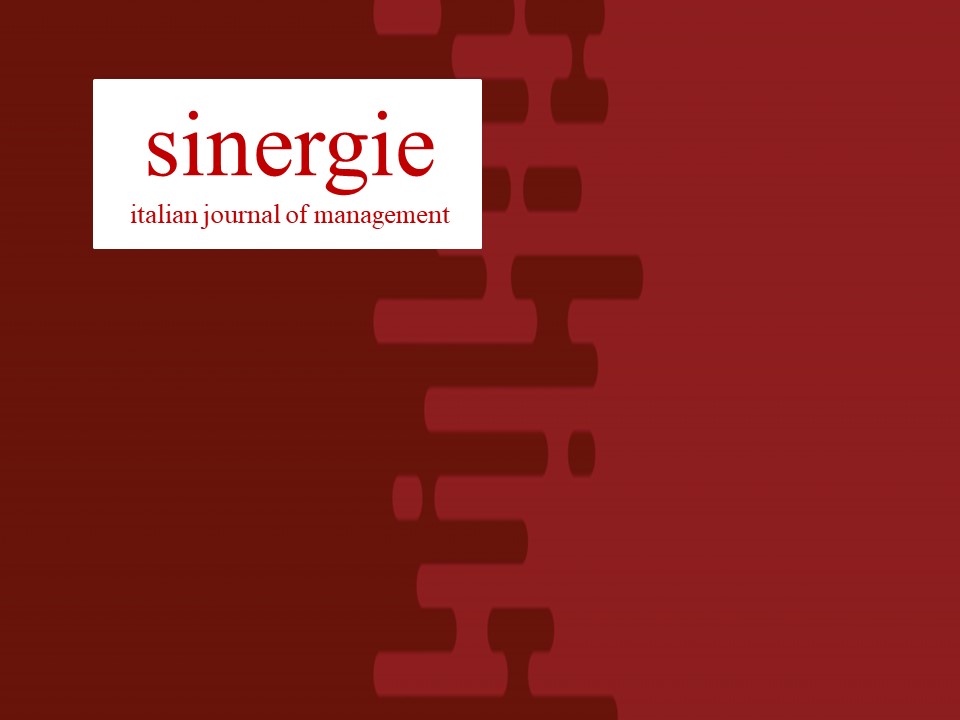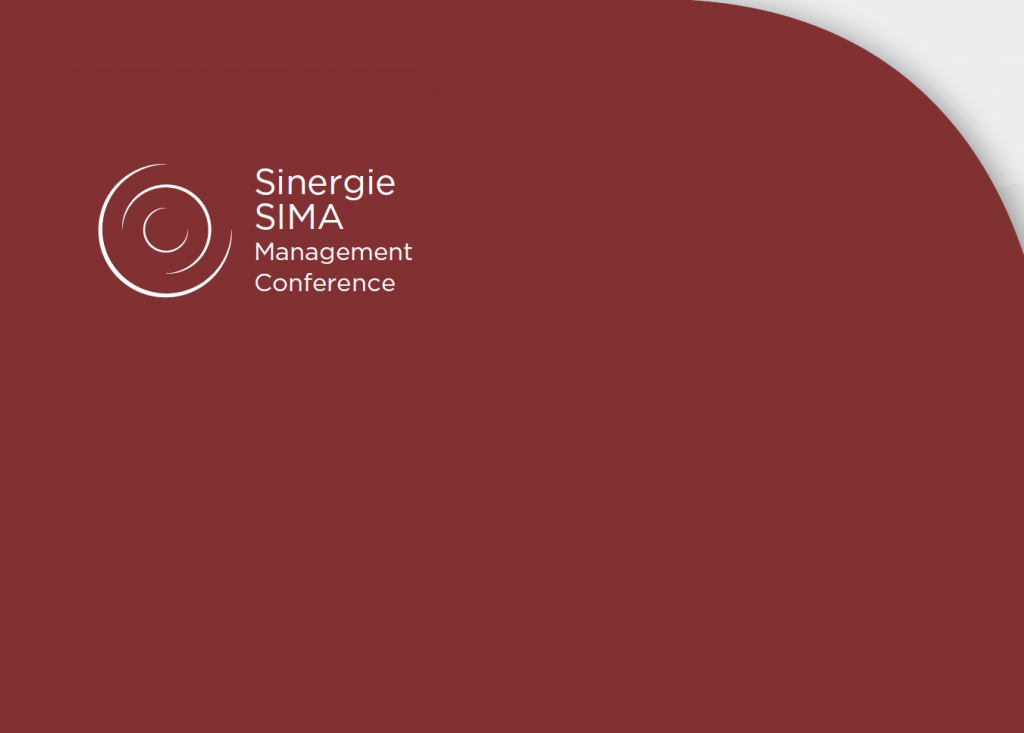Exploring structural capital from the business administration perspective: a general framework on the existing literature
Purpose of the paper: The aim of this paper is to identify the best way to manage and assess structural capital in the context of the current world situation and to define its profile in terms of management and evaluation aspects. In order for these intangible assets to be defined, structural capital is first analyzed and classified according to its relevance to a companys core business.
Methodology: The research approach follows a qualitative methodology, applying a single method approach. Secondary data were investigated through a research protocol.
Findings: The findings of this research are based, first, on organizing international literature concerned with structural capital in order to identify its strong and weak points in terms of its management and economic evaluation. We have introduced a general approach to managing structural capital under specific circumstances with the objective of creating long-term value for companies.
Research limitations: The limitations of the paper depend upon its theoretical format. The general framework used to describe the management and evaluation of structural capital originates from an updated understanding of the concept, derived from the literature on the topic.
Research and management implications: The objective of categorizing structural capital is to associate a suitable management strategy to each structural capital category with the purpose of gaining strategic advantage and creating value.
Originality of the paper: Structural capital encourages the circulation of knowledge within a company and stimulates the creation of long-term value. Strategic value and the unique nature of structural capital makes such a classification of structural capital possible, while defining the most appropriate management strategies that can be put into practice by managers.
Riferimenti bibliografici
ACKOFF R.L. (1961), Systems, organizations and interdisciplinary research, in Eckman D.P. (ed.), Systems: Research and design, J. Wiley & Sons Inc., New York.
ALAVI M., LEIDNER D.E. (1999), Knowledge Management Systems: Issues, Challenges, and Benefits, Communications of the AIS, vol. 1, n. 7, pp. 2-36.
AMRAM M., KULATILAKA N. (1999), Real options: Managing Strategic Investment in an Uncertain World, Harvard Business School Press, Boston.
ARVIDSSON S. (2002), Classifications of Intangibles and Intangibles Impact on a Companys Value-Creation Potential: A Review, Mimeo, Lund.
BENNIS W., NANUS B. (1985), Leaders, Harper & Row, New York.
BLACK F., SCHOLES M. (1972), The valuation of option contracts and test of market efficiency, Journal of Finance, vol. 27, n. 1, pp. 399-417.
BOISOT M. (2002), The creation and sharing of knowledge, in Choo C., Bontis N. (Eds), The Strategic Management of Intellectual Capital and Organizational Learning, Oxford University Press, Oxford.
BOLLINGER A.S., SMITH R.D. (2001), Managing organizational knowledge as a strategic asset, Journal of Knowledge Management, vol. 5, n. 1, pp. 8-18.
BOSWORTH D., WEBSTER E. (2006), The Management of Intellectual Property, Edward Elgar Publishing Limited, Cheltenham.
BLACK F., SCHOLES M. (1972), The pricing of options and corporate liabilities, Journal of Political Economy, vol. 81, n. 3, pp. 637-654.
BRADFORD D.L., COHEN A.R. (1984), Managing Excellence, Wiley, New York.
BRENNAN N., CONNELL B., (2000), Intellectual capital: Current issues and policy implications, Journal of Intellectual Capital, vol. 1, n. 3, pp. 206-240.
BUCHANAN J.M. (1965), An economic theory of club, Economica, vol. 32, n. 125, pp. 1-14.
CHEN M.C., CHENG S.J., HWANG, Y. (2005), An empirical investigation of the relationship between intellectual capital and firms market value and financial performance, Journal of Intellectual Capital, vol. 6, n. 2, pp. 159-176.
CHESBROUGH H. (2006), Open Business Model: How to Thrive in the New Innovation Landscape, Harvard Business Press, Boston.
CHOEN W.M., LEVINTHAL D.A. (1989), Innovation and learning. The two faces of R-S, Economic Journal, vol. 99, n. 397, pp. 569-596.
COLLIS D.J. MONTGOMERY C.A. (1995), Competing on resources: strategy in the 1990?, Harvard Business Review, vol. 73, n. 4, pp. 118-28.
COX J., ROSS S., RUBINSTEIN M. (1979), Option pricing: a simplified approach, Journal of Financial Economics, vol. 7, n. 3, pp. 229-264.
CRAVERA A., MAGLIONE M., RUGGERI R. (2001), La valutazione del capitale intellettuale: creare valore attraverso la misurazione e la gestione degli asset intangibili, Il Sole 24Ore, Milano.
DARROCH J. (2005), Knowledge management, innovation and firm performance, Journal of Knowledge Management, vol. 9, n. 3, pp. 101-115.
DAUM J.H. (2003), Intangible Assets and Value Creation, John Wiley & Sons, New York.
DU PLESSIS M. (2007), The role of knowledge management in innovation, Journal of Knowledge Management, vol. 11, n. 4, pp. 20-29.
EDVINSSON L., MALONE M. (1997), Intellectual Capital, Piatkus, London.
EDVINSSON L., SULLIVAN P. (1996), Developing a Model for Managing Intellectual Capital, European Management Journal, vol. 14, n. 4, pp. 356-364.
FERRATA R. (2007), Valutare gli intagibili tecnologici, Universit Bocconi Editore, Milano.
FORD D., RYAN C. (1981), Taking Technology to Market, Harward Business Review, vol. 59, n. 2, pp. 117-126.
FREEMAN R.E. (1984), Strategic Management: a Stakeholder Approach, Pitman, Boston.
FRIEDMAN S. (1985), Leadership Succession Systems and Corporate Performance, Career Center. Research Report, Columbia University Graduate School of Business, New York.
GRANT R.M. (1991), The resource-based theory of competitive advantage: implications for strategy formulation, California Management Review, vol. 33, n. 3, Spring, pp. 119-145.
GRANT R.M. (1996), Toward a knowledge-based theory of the firm, Strategic Management Journal, vol. 17, Special Issue, Winter, pp. 109-122.
GROJER J.E., JOHANSON U. (1999), Voluntary guidelines on the disclosure of intangibles: a bridge over troubled water?, Journal of Intellectual Capital, vol. 14, n. 4, pp. 423-436.
GUTHRIE G., PETTY R. (2000),, Intellectual capital: Australian annual reporting practice, Journal of Intellectual Capital, vol. 1, n. 3, pp. 241-251.
HANSEN M.T., NOHRIA N., TIERNEY T. (1999), Whats your strategy for managing knowledge?, Harvard Business Review, vol. 77, n. 2, pp. 106-116.
HUNTER L. (2006), A management perspective, in Bosworth D., Webster E. (by), The management of intellectual property, Edward Elgar Publishing Limited, Cheltenham.
KANNAN G., AULBUR W.G. (2004), Intellectual capital: Measurement effectiveness, Journal of Intellectual Capital, vol. 5, n. 3, pp. 389-413.
KAUFMANN L., SCHNEIDER Y. (2004), Intangibles: A synthesis of current research, Journal of Intellectual Capital, vol. 5, n. 3, pp. 366-388.
LAURSEN K., SALTER A. (2006), Open for innovation: the role of openness in explaining innovation performance among UK manufacturing ?rms, Strategic Management Journal, vol. 27, n. 2, pp. 131-150.
LEV B. (2001), Intangibles Management, Measurement, and Reporting, Brookings Institution Press, Washington.
LEV B. (1999), R&D and capital market, Journal of Applied Corporate Finance, vol. 11, n. 4, pp. 21-35.
LOMBARDI R., TREQUATTRINI R., BATTISTA M., (2014), Systematic errors in decision making processes: the case of the Italian Serie A football championship, International Journal of Applied Decision Sciences, vol. 7, n. 3, pp. 239-254.
MADITINOS D., CHATZOUDES D., TSAIRIDIS C., THERIOU G. (2011), The impact of intellectual capital on firms market value and financial performance, Journal of Intellectual Capital, vol. 12, n. 1, pp. 132-151.
MASLOW A.H. (1943), A theory of human motivation, Psychological Review, vol. 50, n. 4, pp. 370-396 .
MAYLOR H., BLACKMON K. (2005), Researching Business and Management, Palgrave Macmillan, New York.
MINTZBERG H. (1973), The nature of Managerial Work, Harper & Row, New York.
MITCHELL R.K., AGLE B.R., WOOD D.J. (1997), Toward a theory of stakeholder identification and salience: defining the principle of who and what really counts, Academy of Management Review, vol. 22, n. 4, pp. 853-886.
MOURITSEN J. (1998), Driving Growth: Economic Value Added versus Intellectual Capital, Management Accounting Research, vol. 9, n. 4, pp. 461-482.
MYERS M.D. (2013), Quantitative Research in Business and Management, Sage, London.
OECD (1999), Guidelines and instructions for OECD Symposium, International Symposium Measuring Reporting Intellectual Capital: Experiences, Issues and Prospects, Amsterdam, OECD, Paris.
PALFREY J. (2012), Intellectual Property Strategy, MIT Press, Cambridge.
PETERSEONS F., AF-BJURSTROM J. (1991), Identifying and Analyzing Intangibles Assets, M&A Europe, vol. 51, September-October . pp. 39-51.
PETTY R., GUTHRIE J. (2000), Intellectual capital literature review: Measurement, reporting and management, Journal of Intellectual Capital, vol. 1, n. 2, pp. 155-176.
PORTER M.E. (1985), The Competitive Advantage: Creating and Sustaining Superior Performance, Free Press, New York.
QUINN J.B., ANDERSON P., FINKELSTEIN S. (1996), Managing Professional Intellect: Making the Most of the Best, Harvard Business Review, vol. 74, n. 2, pp. 71-80.
RAPPAPORT A. (1986), Creating Shareholder Value. The New Standard for Business Performance, The Free Press, New York.
ROONEY E.I., (2003), Real option and energy management using option methodology to enhance capital budgeting decision, Risk Books, London.
SNCHEZ P., CHAMINADE C., OLEA M., (2000), Management of intangibles – An attempt to build a theory, Journal of Intellectual Capital, vol. 1, n. 4, pp. 312-327.
SCHEIN E.H. (1984), Coming to a new awareness of organizational culture, Sloan Management Review, vol. 25, n. 2, pp. 3-16.
SNELL S.A., LEPAK D., YOUNDT MA. (1999), Managing the architecture of intellectual capital: implications for strategic human resource management, in Ferris G.R. (id.), Research in Personnel and Human Resources Management, vol. 84, n.1, Elsevier Science, Amsterdam, pp. 175-93.
STEWART T.A. (1997a), Intellectual capital: The New Wealth of Organizations, Nicholas Brealey Publishing Ltd, London.
STEWART T.A. (1997b), Intellectual Capital: The new wealth of organization, Duobleday/Currency, New York.
STEWART T.A. (2002), The Wealth of Knowledge, Ponte delle Grazie, Milano.
SULLIVAN P.H. (2000), Value driven intellectual capital: how to convert intangible corporate assets into market value, John Wiley & Sons, Inc., New York.
SVEIBY K. (1997), The New Organizational Wealth, Berrett-Koehler, San Francisco.
TAN H.P., PLOWMAN D., HANCOCK P. (2007), Intellectual capital and financial returns of companies, Journal of Intellectual Capital, vol. 8, n. 1, pp. 76-95.
TEECE D. (2000), Managing Intellectual Capital, Oxford University Press, Oxford.
TEECE J. (1986), Profiting from technological innovation: Implications for integration, collaboration, licensing and public policy, Research Policy, vol. 15, n. 6, pp. 285-305.
TIDD J., BESSANT J., PAVITT K. (1997), Managing innovation: integration technological, market and organizational change, John Wiley and Sons, Manchester.
TROTT P., HARTMANN W. (2009), Why open innovation is old wine in new bottles, International Journal of Innovation Management, vol. 13, n. 4, pp. 715-736.
VARIAN H.R. (2005), Copying and copyright, The Journal of Economic Perspectives, vol. 19, n. 2 , pp. 121-138.
VRONTIS D., SAKKA G., AMIRKHANPOUR M. (2015), Management Innovation, Entrepreneurship and Human Resource Management Practices: a Global Perspective, Cambridge Scholars Publishing, UK.
YIN R. (1994), Case study Research, Sage Publication, Thousand Oaks.
ZANDA G. (2011), Corporate Management in a Knowledge Based Economy, Palgrave Macmillan, New York.
ZANDA G., LACCHINI M., ONESTI T. (2005), La valutazione delle aziende, Giappichelli, Torino.


